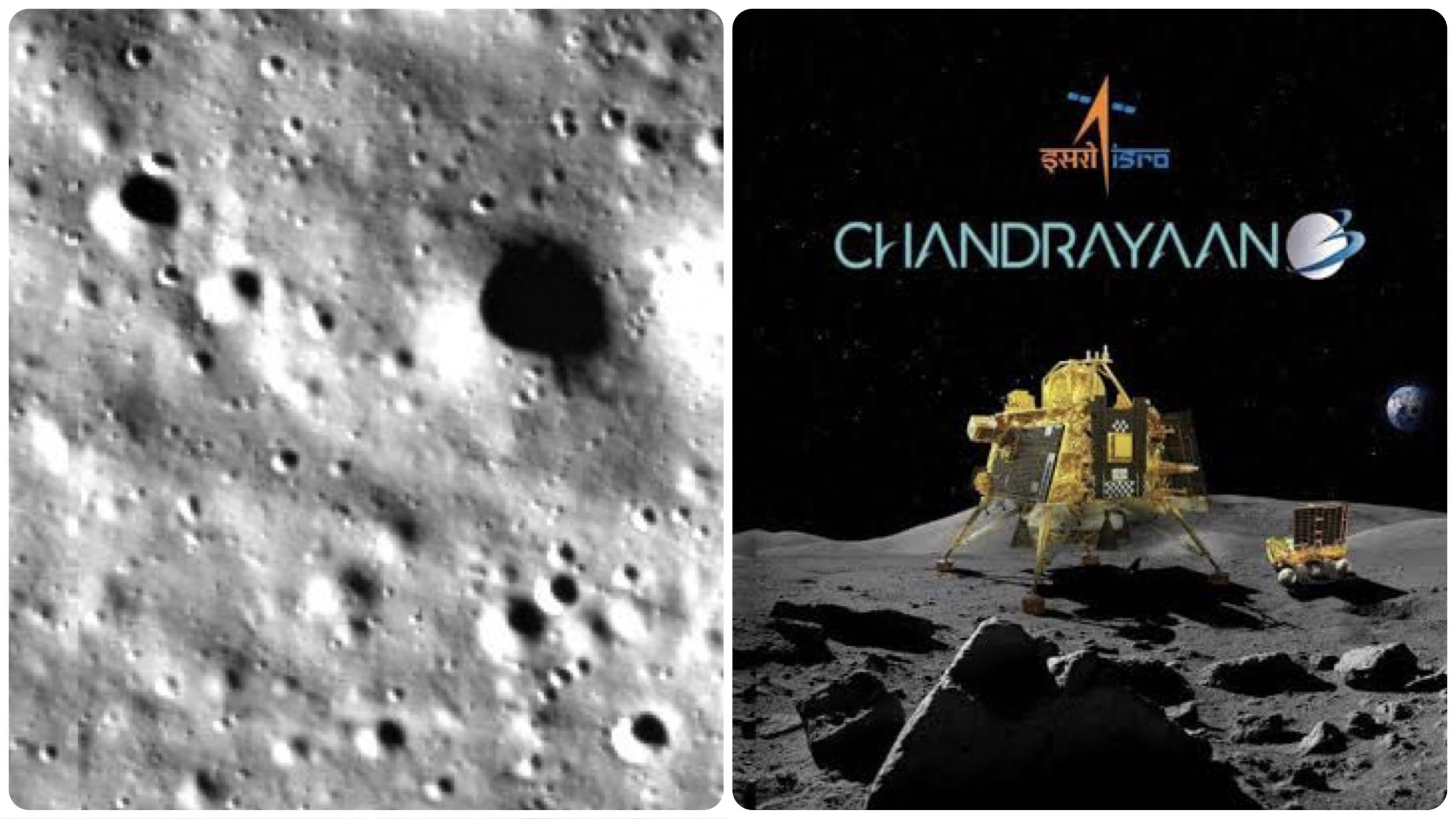Chandrayaan-3 on the Moon: What is so special about the Moon’s South Pole?

[ad_1]
At around 6:04 PM IST on Wednesday (23 August), the Indian Space Research Organisation (ISRO) etched itself as well as India’s name in the annals of history by demonstrating the capabilities of soft-landing on the lunar surface. Evidently, the moment Vikram lander touched the lunar south pole, India became the first nation to achieve this momentous feat.
Overall, India has become the fourth nation to ace a soft landing on the moon only after the former Soviet Union (Russia), the U.S., and China. However, all of the earlier successful spacecraft missions including NASA’s Apollo and Surveyor or the Soviet Luna missions landed in or around the equatorial region.
Click here, to read about the chronology of the Chandrayaan-3 mission.
This means that previous successful missions landed at sites that were located a few degrees latitude north or south of the lunar equator. In the lunar equatorial region, the terrain is generally flatter and comparatively more lander-friendly as against the dark side of the moon, the opposite side of the moon which is hidden from view as seen from Earth.
According to an Indian Express report, the furthest any spacecraft has gone from the equator was Surveyor 7 which was launched by NASA. It landed on the moon way back on 10 January 1968 and it landed near 40 degrees south latitude.
In the recent past, several lunar space missions found it hard to pull off successful soft landing in sites that are nearer to the coveted South pole of the moon. Some of them are as follows –
In April 2019, an Israeli lunar mission aimed for a South Pole landing unfortunately ended in a crash.
Even India’s Chandrayaan-2 mission, launched in 2019, had the objective of landing on the Moon’s south pole. However, during the mission’s concluding stages, the lander carrying the rover encountered an unfortunate mishap and crashed on the lunar surface. It was later revealed that the Chandrayaan-2 failed to achieve its stated aim because of a software error and some other reasons.
However, in the same year, China’s Chang’e 4 mission became the first spacecraft to land on the far side of the moon and it landed near the 45-degree latitude.
Earlier this week, there was a hyped-friendly rivalry between Luna 25 and Chandrayaan-3 lunar missions. Apparently, Russian space mission Luna-25 was racing against time and it also wanted to have a soft landing near the lunar south pole region. However, it faltered and ultimately crashed on the moon’s surface.
So, this raises the question: Why have numerous missions struggled to accomplish a task that has been successfully carried out at various other spots on the moon’s surface? What makes achieving a soft landing difficult in the southern polar terrain of the moon?
Evidently, the challenge stems from the inherently rugged nature of the southern polar terrain. This region is tougher, bumpier, littered with craters, and has deep trenches. Adding to the complexity, the area lacks proper sunlight, resulting in temperatures as low as –230°C. These formidable conditions have posed obstacles for past missions, making ISRO’s successful endeavor all the more impressive and noteworthy.
Now, it is clear that despite the associated risks, the Moon’s south pole holds immense appeal for countries worldwide. This prompts the question: If this task is so daunting, why is this region becoming more crowded over time?
The many reasons underpinning the importance of exploring the moon’s South pole
- Could hold a key for revealing secrets hidden for billions of years: Sunlight or darkness blankets nearly all areas of the Moon but things are different at the moon’s south pole.
In this region, sunlight strikes at a different angle creating lengthy shadows that stretch across the lunar craters. Certain craters remain in perpetual shadow, where sunlight never reaches their depths. Consequently, it is believed that these craters might hold ancient ice deposits that have remained concealed for billions of years. Furthermore, this incredibly cold—effectively frozen—area might hold valuable clues about the early days of the Solar System.
- Water: Earlier, lunar orbiters, including India’s preceding pair of Moon orbiters (Chandrayaan-1 and Chandrayaan-2), have detected traces of hydroxyl (OH) and water on the Moon.
This means that there is strong evidence that the lunar south pole has the presence of ice molecules in it. Now, if there’s enough water present, it might serve as drinking water for explorers and help keep equipment cool. Thus, the presence of water could play a crucial role in future planetary explorations and in achieving ‘space civilisation’.
The ancient water ice could also offer insights into lunar volcanoes and the origins of oceans.
The water could be split into hydrogen and oxygen, which would have significant implications for space exploration missions, including those to Mars.
- Volatiles: Ammonia and methane, among other substances, could potentially be found at the lunar south pole.
- Geological insights: The southern pole of the moon is captivating from a geological insight as well. This area features the South Pole-Aitken basin, the moon’s largest impact basin. Investigating the South Pole-Aitken basin could unlock valuable knowledge about the moon’s origins and how it has evolved over time.
- Astronomical observations: The lunar south pole serves as an excellent vantage point for celestial observations. The permanent shadows at certain craters shield it from the Sun’s radiation. This makes them optimal for studying radio waves and various forms of radiation that are typically blocked by the Earth’s atmosphere.
- Lunar mining: Although, the United Nations Outer Space Treaty of 1967, bars any nation from claiming ownership of the moon, it doesn’t have provisions that would stop commercial operations.
In fact, Initiated by the United States, a collaborative initiative called the Artemis Accords has gained endorsement from 27 nations. The primary goal is to establish a framework of principles guiding lunar exploration and the responsible use of its resources. However, China and Russia have not signed it.
For all these reasons, more countries are in line to explore the lunar south pole despite hardships and failures prior to the Chandrayaan-3’s successful demonstration.
Since the Luna 25 resulted in a failure, Russia would attempt another soft landing on the lunar surface near the south pole at some later stage. Moreover, both the United States and China have missions in the pipeline for the lunar South Pole.
After India became the first nation to demonstrate a soft landing in this region, the US is eager to become the first country to land astronauts at the site, with a crewed Artemis III mission planned for 2025. Apart from the US, China also aims to achieve a soft landing on the coveted South Pole by 2026.
[ad_2]
Source link



